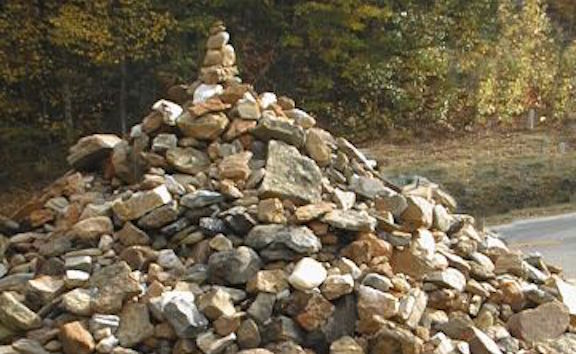
Who knew the secret to eternal youth was in Georgia all this time?
According to one legend, the Cherokee did. Today's guest blogger Dave Tabler shares their fantastic story, complete with a witch, one long-lasting curse, and a dead Cherokee princess.
If you're thinking, "The Cherokee didn't have royal lineage," you're right. While this tall tale is short on historic accuracy, it still illustrates the kinds of legends woven in Appalachia, a mash-up of Native and European lore that, even today, makes for a fun read.
The one thing it's missing is a map to the story's age-defying spring. If you know the location, please take pity on my forehead wrinkles and leave a comment below.
*
Ten miles north of Dahlonega, Georgia, at the intersection of US 19 and State Road 60, is a stone pile in a triangle where the roads cross, known as the Stone Pile Gap. “This pile of stones marks the grave of a Cherokee princess, Trahlyta,” reads the Georgia Historical Commission marker standing guard.
“According to legend her tribe, living on Cedar Mountain north of here, knew the secret of the magic springs of eternal youth from the Witch of Cedar Mountain. Trahlyta, kidnapped by a rejected suitor, Wahsega, was taken far away and lost her beauty. As she was dying, Wahsega promised to bury her near her home and the magic springs. Custom arose among the Indians and later the Whites to drop stones, one for each passerby, on her grave for good fortune. The magic springs, now known as Porter Springs, lie 3/4 miles northeast of here.”
Twice the Georgia Department of Highways has attempted to move the grave during road construction. Both times at least one person died in an accident while moving the pile. Legend says that removing a stone from the pile will bring the curse of the Witch of Cedar Mountain upon the thief. The stone grave remains today in the same place it has always been.
The springs in question were (again!) discovered in 1868 by Joseph H. McKee, a Methodist preacher, on land then belonging to Basil S. Porter. McKee and William Tate, a Baptist preacher, tested the water (in their fashion) for minerals and advertised their findings. People came from miles around pitching tents or taking home gallons of water, and claimed cures of rheumatism, dyspepsia, dropsy and many other diseases, even leprosy.














